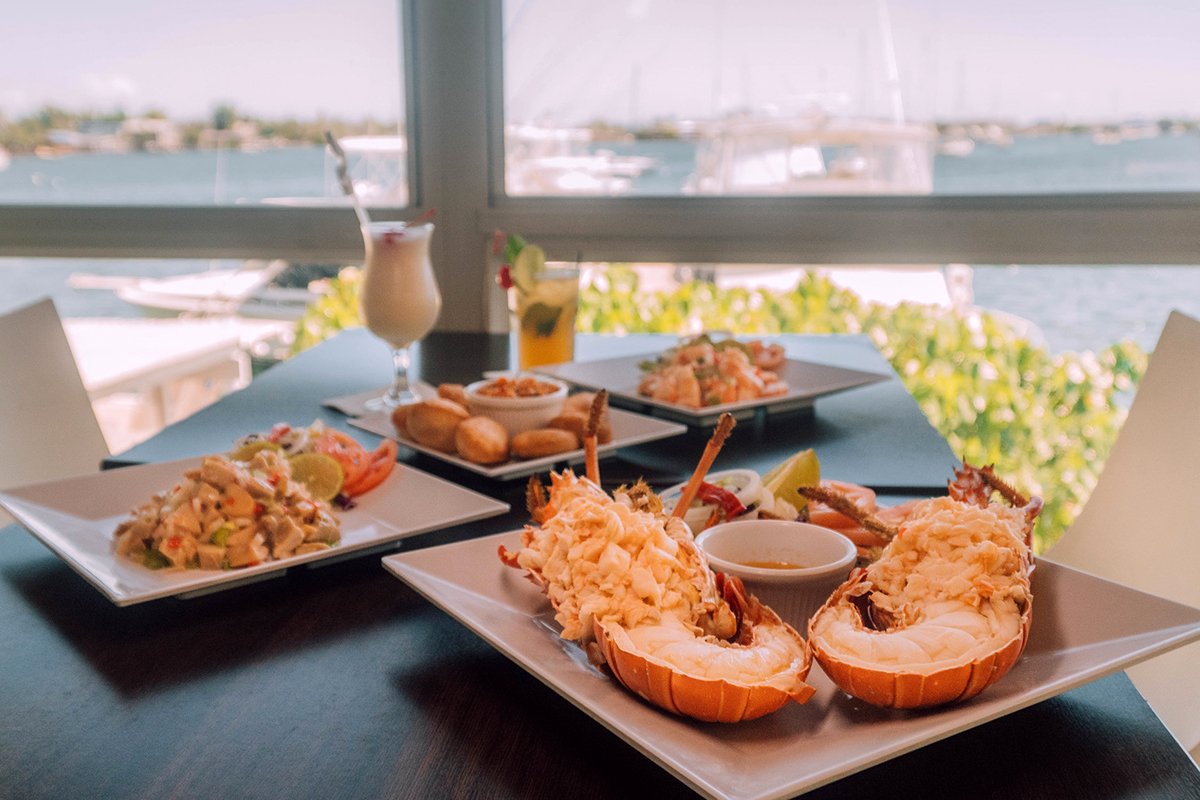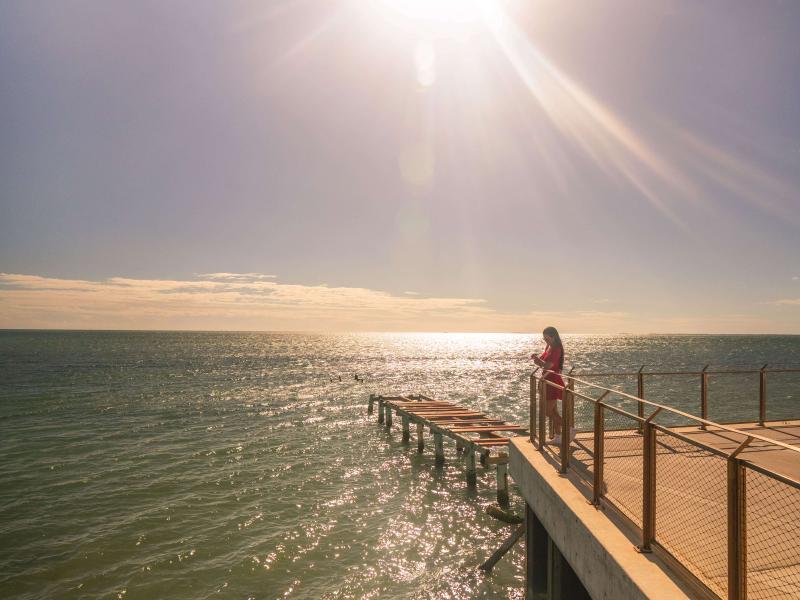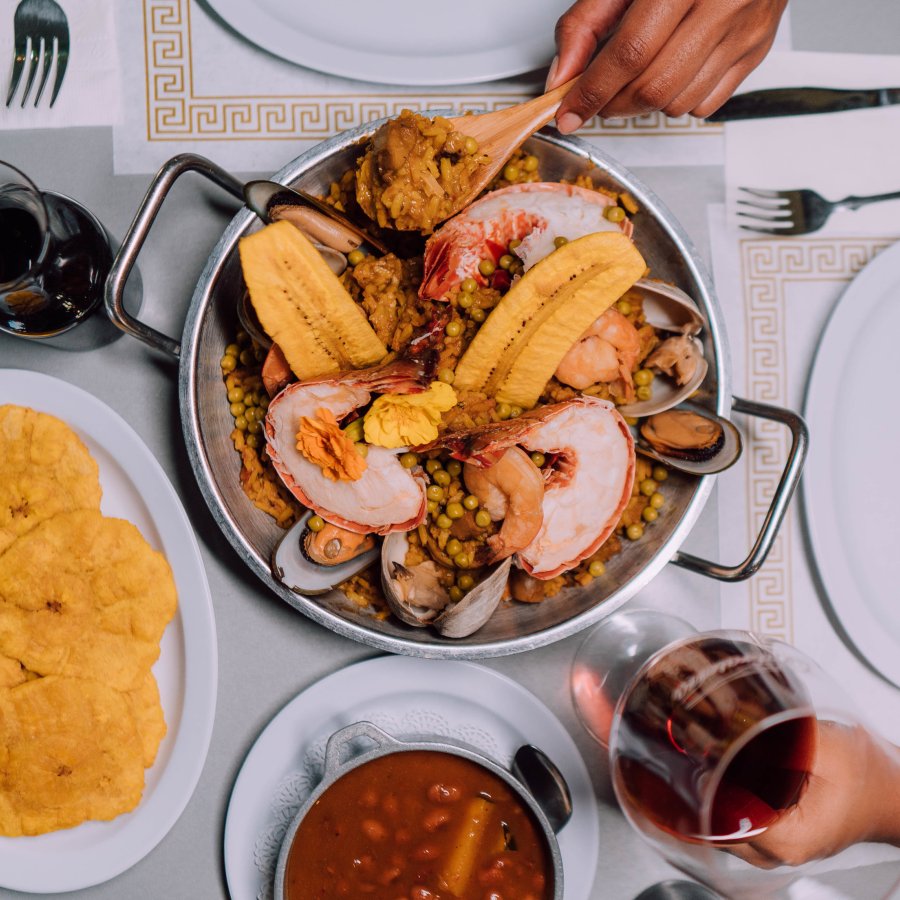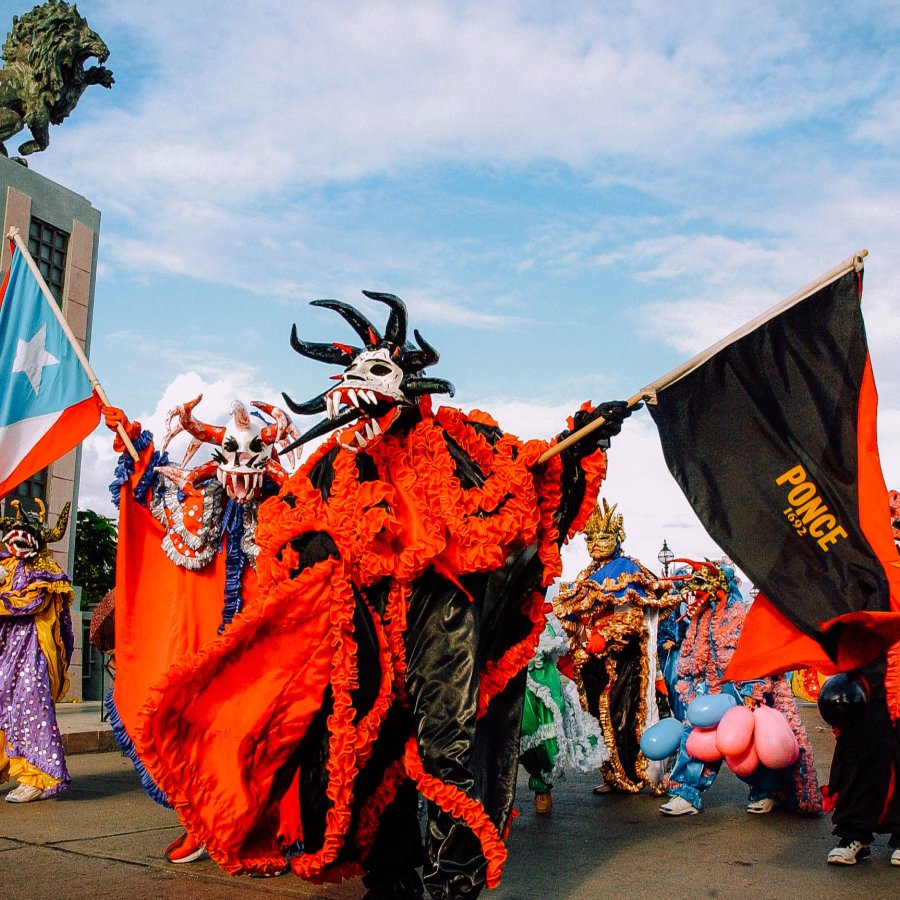A succulent combination of slow-cooked tomatoes, onions, bell peppers, garlic, and olives, which locals call mojo isleño, is heaped generously over a whole fried snapper, sea bass filets, mixed into an octopus and conch salad, or on a giant lobster tail.
Every weekend hundreds of visitors flock to the seaside town of Salinas to visit the Ruta Gastronómica del Mojo Isleño, a section of the coast where a handful of restaurants specializing in mojo isleño serve fresh seafood and fish, as well as chicken, pork, vegetables, or steak, accompanied by the emblematic sauce.
Once a year the town celebrates the International Mojo Isleño Festival, cooking the largest mojo isleño in the world, while in the background famous local bands play through the evening, artisans peddle their goods, and people enjoy recreational activities like kayaking, sailing, and other water sports.
Where Did Mojo Isleño Come From?
The restaurant Ladi's Place in Salinas is where the original mojo isleño recipe was perfected in 1938. The owner at the time, Eladia "Ladi" Correa used a recipe from the Canary Islands which she modified using local ingredients. At her restaurant, which to this day still boasts a stunning view of the Caribbean Sea from its rustic terrace, she served fish and seafood freshly caught by the local fishermen, topped with a generous dose of her special sauce.
Some 80 years later, the recipe has become part of the identity of Salinas. Every restaurant that serves mojo isleño has their own way of making it, but the base remains the same: fresh ingredients cooked over low heat then stored overnight to let the flavors deepen and mesh together.

Delicious seafood served at El Dorado restaurant in Salinas.
Why a Festival?
The International Mojo Isleño Festival began in 2001 as a celebration of the culinary identity of Salinas. Over the years it has grown, with dozens of restaurants selling their most popular dishes drenched in the famous sauce and local chefs coming together to start a tradition of cooking the world’s largest mojo isleño. Participating restaurants usually include Ladi’s Place, Puerta al Sol, El Dorado, El Roble, El Balcón del Capitán, La Barkita, Tablas, among others.
Over the last few years the festival has been held in an area called Paseo Ladí next to the marina and in the heart of the gastronomic route. Friday through Sunday, a stage is set and live bands play into the evening, covering a whole range of Latin music genres from salsa and merengue to bomba and Puerto Rican folk music. Kiosks take over the boardwalk and square selling food as well as traditional artisanal products.
Water sports dominate the daytime portion of the festival and every year the activities change. Last year the festival featured a kayak jangueo, a kayak hang out where dozens of people kayaked out of the marina, through the mangrove coves, stopping at the different restaurants along the water to grab a bite or a drink. In other years there have also been regattas and swimming competitions.
More to Do In Salinas
The festival takes place in mid-July but regardless of what time of year you visit Puerto Rico you can enjoy mojo isleño in the restaurants of Salinas. The town also hosts a Mojo Culinary Fest on the first Friday of every month, gathering local food vendors in the main square of the town for a pared down version of the festival.
And there's more to do than just enjoy fresh seafood. The municipal government has an ecotourism program called "Ven y explora" Salinas through which you can coordinate guided excursions on bike or kayak around the coves of Salinas. The Salinas Tourism Office also coordinates trolley rides to the old Aguirre sugarcane haciendas and the historic town center.
Mojo Isleño Recipe
Like with many recipes passed down through generations, recreating mojo isleño is an inexact science. The ingredients include: onions cut into rings, minced or crushed garlic, pimiento morrón (a type of canned Spanish red bell pepper, but fresh red bell pepper also works), green olives, Spanish-style tomato sauce, bay leaves, olive oil, salt, and peppercorns.
Sauté all the ingredients except the tomato sauce over low heat until the onions become soft which should take just over an hour. Add the tomato sauce, simmering over low heat for another 20 or so minutes. Store the sauce overnight in the refrigerator. Serve heated over fresh fish or seafood or whatever you like!
Paradise for Your Inbox
Get travel inspiration, news, tips and more delivered monthly.



